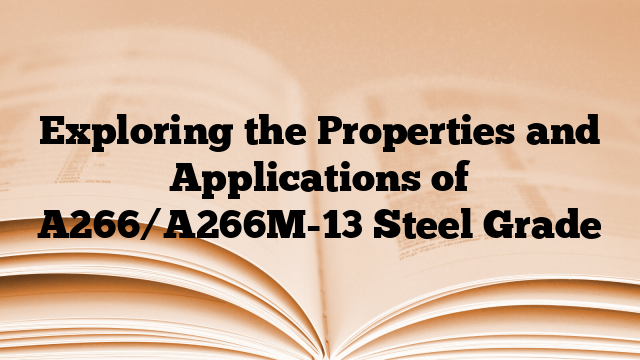A266/A266M-13 is a standard specification for carbon steel forgings for pressure vessel components. It covers various grades of steel, such as Grade 1, Grade 2, Grade 3, and Grade 4, which are classified based on their chemical composition and mechanical properties.
The chemical composition of A266/A266M-13 steel grades typically includes carbon, manganese, phosphorus, sulfur, silicon, and copper. The specific composition requirements may vary depending on the grade. For example, Grade 1 steel should have a maximum carbon content of 0.30%, while Grade 3 steel should have a maximum phosphorus content of 0.025%.
Mechanical properties are also specified in the A266/A266M-13 standard to ensure the desired performance of the steel. These properties include tensile strength, yield strength, elongation, and reduction of area, among others. Each grade has its own set of minimum mechanical property requirements that must be met.
The applications of A266/A266M-13 steel grades are primarily in the fabrication of pressure vessel components, such as shells, heads, and flanges. These components are used in various industries, including oil and gas, chemical processing, power generation, and petrochemicals. The steel’s ability to withstand high-pressure conditions and its good weldability make it suitable for these applications.
In summary, A266/A266M-13 steel grades have a defined chemical composition and mechanical properties that make them suitable for pressure vessel component fabrication. The steel is used in various industries where high-pressure conditions are encountered. Compliance with the standard ensures the quality and performance of these steel grades.

